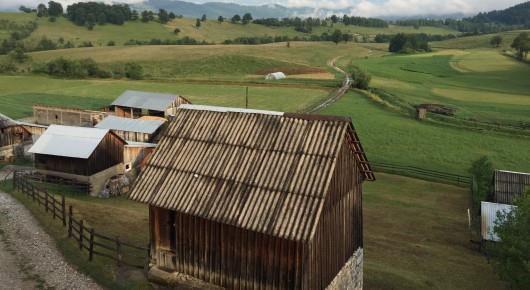Montenegrin meat producers slicing into wider market

Some 5 000 northern Montenegrin farmers still make the traditional dried beef Crnogorska Goveđa pršuta, which, along with the Montenegrin dried and smoked sheep meat Crnogorska Stelja, is poised to receive geographical indication (GI) status, an origin-based label that signals quality, authenticity and tradition.
This development is the result of work by the Food and Agriculture Organization of the United Nations (FAO) and the European Bank for Reconstruction and Development (EBRD), with funding from Luxembourg, to upgrade food safety and quality standards in Montenegro’s meat sector.
A GI label can bump up a product’s sales price by 20 to 50 percent, according to a new FAO-EBRD study.
“We’ve found that consumers, spoiled for choice, are increasingly willing to pay higher prices for origin-linked products whose methods are certified by the state,” said Lisa Paglietti, an FAO economist.
Adrovic Alimr, president of the Association for the Protection of the Quality of Meat from northern Montenegro, is confident the GI recognition will attract new buyers at home and abroad.
“Thanks to the GI, people buying Crnogorska Goveđa pršuta and Crnogorska Stelja know what to expect in terms of taste, texture and quality. These products have been made for generations using local breeds and local know-how and are a proud part of our heritage,” he said. “With the new flexibility measures on food safety, we can start processing these meats on our own farms now and getting them on to more supermarket shelves and into local hotels, cafes and restaurants.”
The flexibility measures are part of new regulations – in line with European Union (EU) legislation – that help small-scale meat producers and producers of traditional meats comply with Montenegro’s new food hygiene requirements.
What’s in a name?
FAO and the EBRD worked closely with Montenegro’s public authorities, meat producers and other key stakeholders to develop and register the GIs.
Together they agreed on a code of practice for producers – from designated production areas and methods to quality and safety standards and packaging.
Montenegrin dried beef, for example, must be made from the best cuts of fresh beef, salted with sea salt, smoked on beech and hornbeam trees and dried in northern Montenegro’s fresh mountain air. What’s more, the cattle must be fed a mostly grass-based diet.
The different processing phases give the meat its distinctive colour, consistency and texture while preventing any bitter taste.
The process to produce Montenegrin smoked and dried sheep meat is similar; the specifications stipulate that at least 90 percent of the feed during the winter months must be grass-based fodder. And because the sheep are moved to mountain grazing pastures and meadows throughout the year, they are exposed to diverse and nutritious forage, deepening the meat’s flavour.
Both products have clearly-defined traceability systems to ensure proof of origin.
Preserving local heritage
The meat quality association, which currently boasts 15 small-scale meat producers, will be responsible for managing and promoting the two GIs.
Adrovic expects membership to grow once the GI registrations are finalized and EU registration gets under way – bringing more producers into the fold and increasing sales.
The GI registrations dovetail nicely with the government’s push to promote local gastronomy alongside tourism in the country’s mountainous regions, which is being supported by another FAO-EBRD project.
The successful registration of these two GIs is already paving the way for other GIs in the country, namely for two cheeses.
And it could lead to even more GIs in the future given how deep Montenegro’s culinary heritage runs, as shown by an inventory produced by FAO and the EBRD of the country’s origin-linked foods and traditional specialties.
According to Jaap Sprey, head of the EBRD Resident Office in Montenegro, GIs have become “very important for farmers, consumers and policy-makers, as they play a key role in helping the country preserve its rich food heritage while also raising producers’ incomes and driving economic growth.”
26 June 2018, Podgorica, Montenegro
